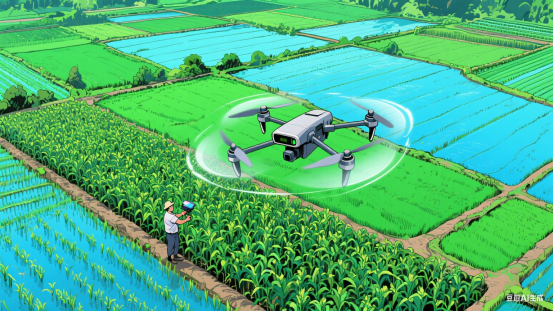
The low-altitude economy uses airspace below 3,000 meters for business activities. It includes drones and electric air taxis called eVTOLs, which take off and land vertically like helicopters. This field is growing fast in China. In cities like Shenzhen, drones deliver over 15,000 food packages daily, cutting costs by 40% compared to trucks. Farmers in Sichuan use drones to check crops, saving weeks of work in the fields.
Two major events this month show its progress. In Shanghai, the International Low-altitude Economy Expo opens on July 23. Nearly 300 companies will display new technologies. For example, DJI’s unmanned drone stations can inspect power lines automatically, acting as “eyes in the sky” for city management. Another company, Tengden, will show drones that provide emergency communication during disasters, creating a lifeline when ground networks fail. Visitors can try VR simulators to fly drones and watch eVTOLs carry people like flying taxis. The expo even includes night drone light shows over the Huangpu River, mixing technology with art.
Meanwhile, Xi’an hosts the World Drone Conference from July 25. Universities there will reveal breakthroughs like quantum navigation systems—tools that guide drones with extreme accuracy using advanced physics. At the expo, companies like Zhongke Ferno will perform dances with 100 drones flying in perfect sync, like a ballet in the sky. Other drones can find hidden dangers in power lines using special cameras, preventing blackouts in mountain areas.
Governments strongly support this growth. Xi’an has built 12 test flight routes and set up a 2-billion-yuan fund for new ideas. Training centers teach villagers to operate farming drones—many farmers in Gansu Province have learned these skills, increasing crop harvests by 20%. Shanghai’s expo also offers job fairs, inviting students to join this field as engineers or pilots.
Soon, low-altitude technology may be everywhere. By 2027, tourists in Hainan could ride flying taxis between beaches. High school students in Guangzhou join drone design contests, and geography classes use them to map rivers. As costs drop, ordering a flying taxi might become as easy as booking a car ride today.
原创编写 版权所有 侵权必究! 每日更新 个性化阅读 英语飙升!
1.1. What is the key feature of eVTOLs?
A Fly faster than planes.
B Vertical takeoff/landing.
C Carry heavy cargo.
D Use solar energy.
解析:选B。B 细节理解题。根据第一段的“take off and land vertically like helicopters”,可知,eVTOLs的核心特征是垂直起降。故选B。
2.2. What does “lifeline” refer to?
A Drone light shows.
B Power line inspection.
C VR simulators.
D Disaster communication.
解析:选D。D 词义猜测题。根据第二度划线单词上下文“provide emergency communication... when ground networks fail”,说明无人机在灾难中提供应急通信支持,成为生命线。故选D。
3.3. What can we infer about quantum navigation?
A It’s more precise than GPS.
B It needs satellite signals.
C It’s used for drone dances.
D It’s easy to operate.
解析:选A。A 推理判断题。根据第三段“extreme accuracy using advanced physics”可推断该技术比传统GPS(依赖卫星)精度更高。故选A。
4.4. What is the best title for the passage?
A Drone Technology: Recent Inventions
B China’s Booming Low-altitude Economy
C Major Events in July for Tech Fans
D How Governments Support New Industries
解析:选B。B 主旨大意题。全文围绕中国低空经济展开,介绍了其定义、包含内容、发展现状、相关活动、政府支持及未来前景,“China’s Booming Low-altitude Economy”能准确概括全文主旨。故选B。
